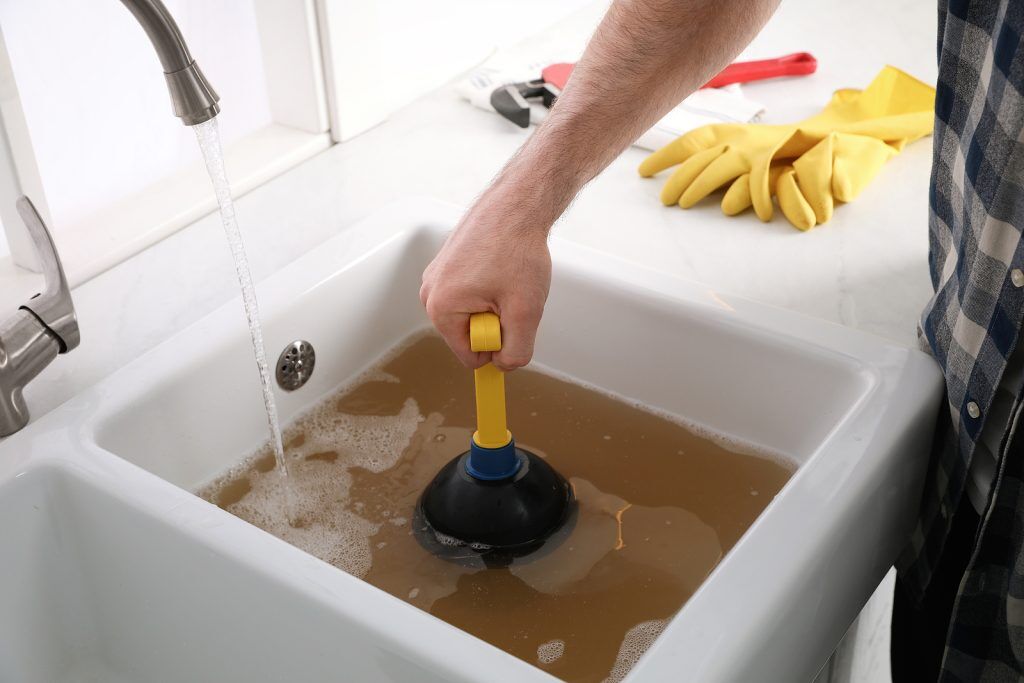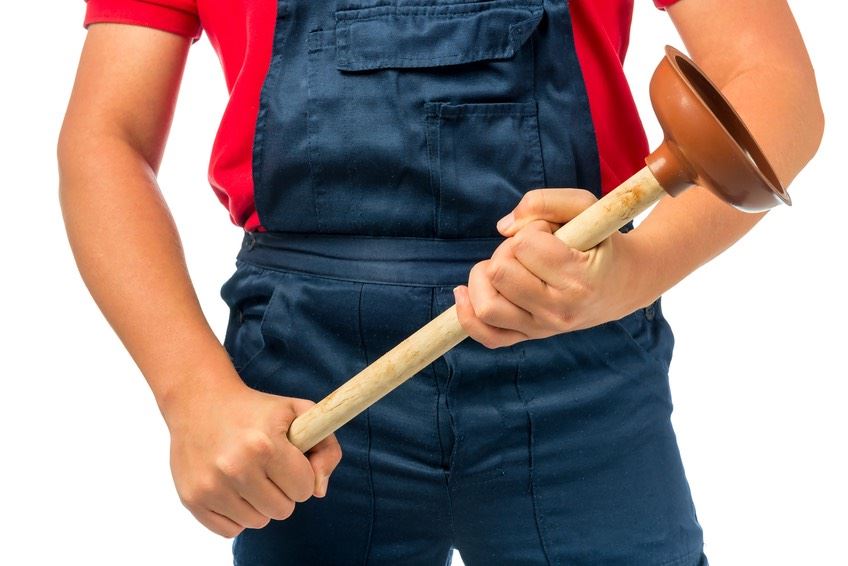They are making several good observations regarding How to Unclog Your Sink with a Plunger as a whole in this content which follows.

Intro
Proper upkeep of household drains pipes is crucial for preventing clogs and making sure smooth water circulation. One of the trick tools in every property owner's toolkit is the bettor, along with various drain cleansers designed to take on stubborn clogs properly. This post checks out how to use plungers and drain cleaners efficiently to keep your drains moving openly.
Section 1: Understanding Bettors
Kinds of Plungers
There are several types of bettors available, each developed for different types of drains pipes and clogs. One of the most typical types consist of cup bettors, flange plungers, and accordion plungers.
Exactly How Plungers Job
Plungers deal with the principle of developing pressure and suction to dislodge clogs. When properly applied over a drainpipe, they create a vacuum that can take out debris or break up obstructions.
Choosing the Right Plunger
Selecting the ideal plunger depends on the sort of drainpipe and the nature of the blockage. Mug plungers are perfect for sinks and tubs, while flange bettors are better matched for commodes as a result of their layout.
Usual Errors with Plungers
Avoiding these mistakes makes certain reliable plunging: incorrect seal around the drainpipe, inadequate force, and not clearing surrounding debris.
Area 2: Making Use Of Plungers Efficiently
Preparation
Before plunging, guarantee the plunger covers the drainpipe completely and forms a limited seal. Clear any kind of noticeable particles around the drain opening.
Strategy
Begin with mild plunging motions to build suction. Rise pressure gradually, utilizing a consistent rhythm. Repeat as required until the drainpipe gets rid of.
Fixing Tips
If plunging doesn't function, attempt readjusting the seal, using petroleum jelly for a much better seal, or making use of a different sort of plunger.
Area 3: Understanding Drain Cleaners
Types of Drainpipe Cleaning Company
Drain cleansers can be chemical or enzymatic. Chemical cleaners make use of solid chemicals to liquify obstructions, while chemical cleansers utilize all-natural enzymes to break down raw material.
Just How Drain Cleaning Company Work
Chemical cleansers respond with obstructions to dissolve them, while enzymatic cleansers break down organic products like hair and grease without hurting pipelines.
Safety and security Factors to consider
Constantly put on handwear covers and eye defense when making use of chemical drain cleansers. Make sure ample ventilation and comply with manufacturer instructions carefully.
Eco-Friendly Alternatives
Think about utilizing vinegar and cooking soft drink or enzyme-based cleansers for eco-friendly choices that are more secure for pipelines and the environment.
Area 4: Utilizing Drain Cleaners Effectively
Application Methods
Put chemical cleansers directly right into the drainpipe opening. Enable them to work for the recommended time before purging with hot water. Enzymatic cleaners should rest overnight.
Precautions
Stay clear of mixing different sorts of cleansers, as this can produce poisonous fumes. Never use chemical cleansers along with a bettor, as spilling can occur.
Managing Stubborn Clogs
For consistent blockages, take into consideration making use of a plumbing serpent or calling a specialist plumbing professional to stop damage to pipelines.
Final thought
In conclusion, recognizing how to make use of plungers and drain cleansers successfully is vital for preserving healthy and balanced plumbing systems. By selecting the right tools and strategies, property owners can take on minor obstructions and stop major pipes concerns down the line.
How To Properly Use A Plumbing Snake To Clear Drains
When any drain clogs in our home arise, we tend to gravitate toward the plunger and little else. In cases where the plunger and its vacuum-created pressure are not able to clear clogs, many immediately move to harmful chemicals or simply call their plumber to fix the issue.
we’re happy to help with all drain cleaning needs and concerns. This includes informing you on a few other home remedies you may have at your disposal for minor to moderate clogs, one of which is the use of a plumbing snake. Many people have never used one of these before – let’s go over the steps to take when your drain clogs and you have a plumbing snake available.
Attempt Plunger Use
The first step here, as we noted above, should indeed be to grab your plunger when you notice a drain clog and attempt to resolve it this way. If you’re unsure how to use a particular type of plunger, our plumbers can answer any questions you have. If this doesn’t do the trick, however, you move on to the snake.
Locate And Prepare Snake
A plumbing snake is a metal or plastic device that’s generally about a quarter of an inch thick. It’s design with significant extensions, meant to reach down into your clogged drain and push the clog out. Snakes also contain drain augers that will latch onto and push stubborn blockages.
If your plunger doesn’t clear a clog, locate your snake and bring it to the drain in question. We also recommend keeping a bucket nearby to collect the clog once you pull it out, plus we’d advise wearing goggles and possibly protective gloves.
Feed Snake
Once you’re ready to go, feed the snake slowly down the drain, using the crank device it comes with to keep it moving until it finds the clog. Once this happens, much of the clog will be latched onto the coil so you can pull it out, while the rest will simply break up and flow downward.
Detach Debris
Remove the snake slowly from the drain, and once you’ve done so, pick off any debris that’s stuck to the coil. This is another area where wearing gloves is a must.
Flush Drain
Finally, take a few minutes to ensure the snake has done its job correctly. If you’ve been using it on a toilet, flush the toilet a couple times and make sure everything flows well. If you’ve used it on a different drain, flush it with some room temperature water.
https://www.mybuddytheplumber.com/blog/how-to-properly-use-a-plumbing-snake-to-clear-drains/

Application Methods
Put chemical cleansers directly right into the drainpipe opening. Enable them to work for the recommended time before purging with hot water. Enzymatic cleaners should rest overnight.
Precautions
Stay clear of mixing different sorts of cleansers, as this can produce poisonous fumes. Never use chemical cleansers along with a bettor, as spilling can occur.
Managing Stubborn Clogs
For consistent blockages, take into consideration making use of a plumbing serpent or calling a specialist plumbing professional to stop damage to pipelines.
Final thought
In conclusion, recognizing how to make use of plungers and drain cleansers successfully is vital for preserving healthy and balanced plumbing systems. By selecting the right tools and strategies, property owners can take on minor obstructions and stop major pipes concerns down the line.
How To Properly Use A Plumbing Snake To Clear Drains
When any drain clogs in our home arise, we tend to gravitate toward the plunger and little else. In cases where the plunger and its vacuum-created pressure are not able to clear clogs, many immediately move to harmful chemicals or simply call their plumber to fix the issue.
we’re happy to help with all drain cleaning needs and concerns. This includes informing you on a few other home remedies you may have at your disposal for minor to moderate clogs, one of which is the use of a plumbing snake. Many people have never used one of these before – let’s go over the steps to take when your drain clogs and you have a plumbing snake available.
Attempt Plunger Use
The first step here, as we noted above, should indeed be to grab your plunger when you notice a drain clog and attempt to resolve it this way. If you’re unsure how to use a particular type of plunger, our plumbers can answer any questions you have. If this doesn’t do the trick, however, you move on to the snake.
Locate And Prepare Snake
A plumbing snake is a metal or plastic device that’s generally about a quarter of an inch thick. It’s design with significant extensions, meant to reach down into your clogged drain and push the clog out. Snakes also contain drain augers that will latch onto and push stubborn blockages.
If your plunger doesn’t clear a clog, locate your snake and bring it to the drain in question. We also recommend keeping a bucket nearby to collect the clog once you pull it out, plus we’d advise wearing goggles and possibly protective gloves.
Feed Snake
Once you’re ready to go, feed the snake slowly down the drain, using the crank device it comes with to keep it moving until it finds the clog. Once this happens, much of the clog will be latched onto the coil so you can pull it out, while the rest will simply break up and flow downward.
Detach Debris
Remove the snake slowly from the drain, and once you’ve done so, pick off any debris that’s stuck to the coil. This is another area where wearing gloves is a must.
Flush Drain
Finally, take a few minutes to ensure the snake has done its job correctly. If you’ve been using it on a toilet, flush the toilet a couple times and make sure everything flows well. If you’ve used it on a different drain, flush it with some room temperature water.
https://www.mybuddytheplumber.com/blog/how-to-properly-use-a-plumbing-snake-to-clear-drains/

We were made aware of that editorial about A Guide to Plungers (and How to Use Them) from someone on our other blog. Do you know about anybody else who is in to the topic? Take a moment to share it. Many thanks for going through it.
Request Your Service